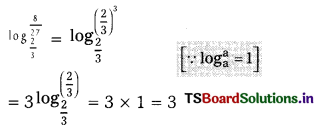Students can practice 10th Class Maths Textbook SSC Solutions Telangana Chapter 13 Probability Ex 13.2 to get the best methods of solving problems.
TS 10th Class Maths Solutions Chapter 13 Probability Exercise 13.2
Question 1.
A bag contains 3 red balls and 5 black balls. A ball is drawn at random from the bag. What is the probability that the ball selected is (i) red ? (ii) not red ? (AS1)
Solution:
i) Total number of balls in the bag = 3 red + 5 black = 8 balls
Number of total outcomes when a ball is selected at random = 3 + 5 = 8
Now, number of favourable outcomes of red ball = 3
∴ Probability of getting a red ball
P(E) = \(\frac{\text { No. of favourable outcome }}{\text { No. of total outcomes }}\)
= \(\frac{3}{8}\)
ii) If P(\(\overline{\mathrm{E}}\)) is the probability of selecting no red balls, then
P(E) + P(\(\overline{\mathrm{E}}\)) = 1
P(\(\overline{\mathrm{E}}\)) = 1 – P(E) = 1 – \(\frac{3}{8}\) = \(\frac{5}{8}\)
Question 2.
A box contains 5 red marbles, 8 white marbles and 4 green marbles. One marble is taken out of the box at random. What is the probability that the marble taken out will be (i) red ? (ii) white ? (iii) not green ? (AS1)
Solution:
There are 5 red marbles, 8 white marbles and 4 green marbles in a bag.
∴ Total number of marbles in the bag = 5 + 8 + 4= 17
∴ Number of all possible outcomes = 17
i) Let E be the event that the marble taken out will be red.
Total number of red marbles in the bag = 5
∴ Number of outcomes favourable to E = 5
P(E) = \(\frac{\text { No. of outcomes favourable to E}}{\text { No. of all possible outcomes }}\)
= \(\frac{5}{17}\)
ii) Let E be the event that the marble taken out will be white.
Total number of white marbles in the bag = 8
∴ Number of outcomes favourable to E = 8
P(E) = \(\frac{\text { No. of outcomes favourable to E}}{\text { No. of all possible outcomes }}\)
= \(\frac{8}{17}\)
iii) Let E be the event that the marble taken out will be green.
Total number of green marbles in the bag = 4
∴ Number of outcomes favourable to E = 4
P(E) = \(\frac{\text { No. of outcomes favourable to E}}{\text { No. of all possible outcomes }}\)
= \(\frac{4}{17}\)
∴ Probability that the marble taken out will not be green.
= 1 – P (Probability that the marble taken out will be green)
= 1 – P(E) = 1 – \(\frac{4}{17}\) = \(\frac{13}{17}\)
![]()
Question 3.
A Kiddy bank contains hundred 50p coins, fifty ₹ 1 coins, twenty ₹ 2 coins and ten ₹ 5 coins. If it is equally likely that one of the coins will fall out when the bank is turned upside down, what is the probability that the coin (i) will be a 50p coin ? (ii) will not be a ₹ 5 coin ? (AS1)
Solution:
i) Number of 50p coins = 100
Number of ₹ 1 coins = 50
Number of ₹ 2 coins = 20
Number of ₹ 5 coins = 10
∴ Total number of coins
= 100 + 50 + 20 + 10 = 180
Number of total outcomes for a coin to fall down = 180
Number of outcomes favourable to 50p coins to fall down = 100
∴ Probability of a 50p coin to fall down No. of favourable outcomes
= \(\frac{\text { No. of favourable outcomes }}{\text { No. of total outcomes }}\)
= \(\frac{100}{180}\) = \(\frac{5}{9}\)
ii) Let P(E) be the probability for a ₹ 5 coin to fall down.
= \(\frac{1}{2}\) (P(\(\overline{\mathrm{E}}\))) = \(\frac{1}{2}\) (P(\(\overline{\mathrm{E}}\)))
No. of outcomes favourable to ₹ 5 coin = 10
∴ Probability for a ₹ 5 coin to fall down
= \(\frac{\text { No. of favourable outcomes }}{\text { No. of total outcomes }}\)
= \(\frac{10}{180}\) = \(\frac{1}{18}\)
Then P(\(\overline{\mathrm{E}}\)) is the probability of a coin which fall down is not a ₹ 5 coin.
Again P(E) + P(\(\overline{\mathrm{E}}\)) = 1
∴ P(\(\overline{\mathrm{E}}\)) = 1 – P(E)
= 1 – \(\frac{1}{18}\)
= \(\frac{17}{18}\)
Question 4.
Gopi buys a fish from a shop for his aquarium. The shopkeeper takes out one fish at random from a tank containing 5 male fish and 8 female fish (See figure). What is the probability that the fish taken out is a male fish ? (AS4)

Solution:
Number of male fish in the acquarium = 5
Number of female fish in the acquarium = 8
Total number of fish in the acquarium = 5 + 8 = 13
∴ Number of all possible outcomes = 13
Let E be the event that the fish taken out is a male fish.
Number of outcomes favourable to E = 5
∴ P(E) = \(\frac{\text { No. of outcomes favourable to E}}{\text { No. of all possible outcomes }}\)
= \(\frac{5}{13}\)
![]()
Question 5.
A game of chance consists of spinning an arrow which comes to rest pointing at one of the numbers 1, 2, 3, 4, 5, 6, 7, 8 (See figure) and these are equally likely outcomes. What is the probability that it will point at
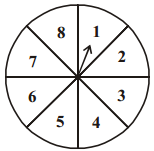
i) 8?
ii) an odd number ?
iii) a number greater than 2 ?
iv) a number less than 9 ?
Solution:
i) The figure shows the numbers from 1 to 8.
Let E be the event that the arrow comes to rest pointing at 8.
Number of outcomes favourable to E = 1
Number of all possible outcomes = 8
∴ P(E) = \(\frac{\text { No. of outcomes favourable to E}}{\text { No. of all possible outcomes }}\)
= \(\frac{1}{8}\)
ii) The odd numbers shown in the figure are 1, 3, 5 and 7 = 4.
Let E be the event that the arrow will point an odd number.
Number of outcomes favourable to E = 4
Number of all possible outcomes = 8
∴ P(E) = \(\frac{\text { Number of outcomes favourable to E}}{\text { Number of all possible outcomes }}\)
= \(\frac{4}{8}\) = \(\frac{1}{2}\)
iii) The numbers which are greater than 2 as per the figure given are 3, 4, 5, 6, 7 and 8 = 6
Let E be the event that the arrow will point a number greater than 2.
Number of outcomes favourable to E = 6
Number of all possible outcomes = 8
∴ P(E) = \(\frac{\text { Number of outcomes favourable to E}}{\text { Number of all possible outcomes }}\)
= \(\frac{6}{8}\) = \(\frac{3}{4}\)
iv) The numbers less than 9 are 1, 2, 3. 4, 5, 6, 7,8
Let E be the event that the arrow will point a number less than 9.
Number of outcomes favourable to E = 8
Number of all possible outcomes = 8
∴ P(E) = \(\frac{\text { Number of outcomes favourable to E}}{\text { Number of all possible outcomes }}\)
= \(\frac{8}{8}\) = 1
![]()
Question 6.
One card is selected from a well-shuffled deck of 52 cards. Find the probability of getting
i) a king of red colour
ii) a face card
iii) a red face card
iv) the jack of hearts
v) a spade
vi) the queen of diamonds.
Solution:
Total number of cards = 52
∴ Number of all possible outcomes in selecting a card at random = 52
i) Number of out comes favourable to the kings of red colour = 2(♥k, ♥k)
∴ Probability of getting the king of red colour
= \(\frac{\text { No. of favourable outcomes }}{\text { No. of total outcomes }}\)
= \(\frac{2}{52}\) = \(\frac{1}{26}\)
ii) Number of face cards in a deck of cards = 4 × 3 = 12(K, Q, J)
No. of outcomes favourable to select face card = 12
∴ Probability of getting a face card
= \(\frac{\text { No. of favourable outcomes }}{\text { No. of total outcomes }}\)
= \(\frac{12}{52}\) = \(\frac{3}{13}\)
iii) Number of red face cards = 2 × 3 = 6
∴ No. of outcomes favourable to select a red face card = 6
∴ Probability of getting a red face card
= \(\frac{\text { No. of favourable outcomes }}{\text { No. of total outcomes }}\)
= \(\frac{6}{52}\) = \(\frac{3}{26}\)
iv) No. of outcomes favourable to the jack of hearts = 1
∴ Probability of getting the jack of hearts.
= \(\frac{\text { No. of favourable outcomes }}{\text { No. of total outcomes }}\)
= \(\frac{1}{52}\)
v) No. of spade cards = 13
∴ No. of outcomes favourable to ‘a spade card’ = 13
∴ Probability of getting a spade card
= \(\frac{\text { No. of favourable outcomes }}{\text { No. of total outcomes }}\)
= \(\frac{13}{52}\) = \(\frac{1}{4}\)
vi) No. of outcomes favourable to the queen of diamonds = 1
∴ Probability of getting the queen of diamonds
= \(\frac{\text { No. of favourable outcomes }}{\text { No. of total outcomes }}\)
= \(\frac{1}{52}\)
![]()
Question 7.
Five cards-the ten, jack, queen, king and ace of diamonds, are well shuffled with their face downwards. One card is selected at random.
i) What is the probability that the card is the queen ?
ii) If the queen is selected and put aside (without replacement), what is the probability that the second card selected is
(a) an ace ? (b) a queen ?
Solution:
Total number of cards = 5
Well – Shuffled with their face downwards.
i) Let E be the event that the card is the queen. Therefore, the number of outcomes favourable to E = 1
So, P(E) = \(\frac{\text { Number of outcomes favourable to E}}{\text { Number of all possible outcomes }}\)
= \(\frac{1}{5}\)
ii) If the queen is selected & put a side then the number of remaining cards is 4 (i.e.,) (5 – 1 = 4)
∴ No. of all possible outcomes = 4
a) Let E be the event that the second card picked up is an ace.
Then, the number of outcomes favourable toE = 1
So. P(E)
= \(\frac{\text { Number of outcomes favourable to E}}{\text { Number of all possible outcomes }}\)
= \(\frac{1}{4}\)
b) Let E be the event that the second card selected is a queen.
Then, the number of outcomes favourable to E is 0 (∵ there is no queen)
So, P(E)
= \(\frac{\text { Number of outcomes favourable to E}}{\text { Number of all possible outcomes }}\)
= \(\frac{0}{4}\) = 0
Question 8.
12 defective pens are accidentally mixed 10. with 132 good ones. It is not possible to just look at a pen and tell whether or not it is defective. One pen is taken out at random from this lot. Determine the probability that the pen taken out is a good one.
Solution:
Number of defective pens = 12
Number of good pens = 132
∴ Total number of pens = Number of defective pens + number of good pens
= 12 + 132 = 144
Let E be the event that the pen taken out is a good one,
Then, the number of outcomes favourable to
E = 132
So, P(E) = \(\frac{\text { Number of outcomes favourable to E}}{\text { Number of all possible outcomes }}\)
= \(\frac{132}{144}\) = \(\frac{11}{12}\)
![]()
Question 9.
A lot of 20 bulbs contain 4 defective ones. One bulb is selected at random from the lot. What is the probability that this bulb is defective ? Suppose the bulb selected in previous case is not defective and is not replaced. Now one bulb is selected at random from the rest. What is the probability that this bulb is not defective ? (AS1, AS4)
Solution:
Total number of bulbs = 20
∴ No. of all possible outcomes = 20
i) Let E be the event that the bulbs drawn at random from the lot is defective.
Then, the number of outcomes favourable to E = 4
∴ P(E) = \(\frac{\text { Number of outcomes favourable to E}}{\text { Number of all possible outcomes }}\)
= \(\frac{4}{20}\) = \(\frac{1}{5}\)
ii) As one bulb is selected at random from the rest,
Total number of bulbs = 20 – 1 = 19
Number of defective bulbs = 4
Let E be the event that the bulb selected is not defective.
Then, the number of outcomes favourable to E is 15 since, now there are 19 – 4 = 15 bulbs which are not defective.
∴ P(E) = \(\frac{\text { No. of outcomes favourable to E}}{\text { No. of all possible outcomes }}\)
= \(\frac{15}{19}\)
Question 10.
A box contains 90 discs which are numbered from 1 to 90. If one disc is selected at random from the box, find the probability that it bears (i) a two-digit number (ii) a perfect square number (iii) a number divisible by 5. (AS1)
Solution:
Number of discs in the box = 90
∴ Number of all possible outcomes = 90
i) Let E be the event that the disc bears a two-digit number.
One digit numbers are 1, 2, 3, 4, 5, 6, 7, 8 and 9. These are 9 in numbers.
Then, the number of outcomes favourable to E = 90 – 9 = 81
∴ P(E) = \(\frac{\text { No. of outcomes favourable to E}}{\text { No. of all possible outcomes }}\)
= \(\frac{81}{90}\) = \(\frac{9}{10}\)
ii) Let E be the event that the disc bears a perfect square number.
The perfect square numbers from 1 to 90 are 1, 4, 9, 16, 25, 36, 49, 64, 81. These are 9.
Then, the number of outcomes favourable to E = 9
∴ P(E) = \(\frac{\text { No. of outcomes favourable to E}}{\text { No. of all possible outcomes }}\)
= \(\frac{9}{90}\) = \(\frac{1}{10}\)
iii) Let E be the event that the disc bears a number divisible by 5 are 5, 10, 15, 20, 25, 30, 35, 40, 45, 50, 55, 60, 65, 70, 75, 80, 85, 90. These are 18.
Then, the number of outcomes favourable to E = 18
∴ P(E) = \(\frac{\text { No. of outcomes favourable to E}}{\text { No. of all possible outcomes }}\)
= \(\frac{18}{90}\) = \(\frac{1}{5}\)
![]()
Question 11.
Suppose you drop a die at random on the rectangular region shown in figure. What is the probability that it will land inside the circle with diameter 1m ? (AS4)
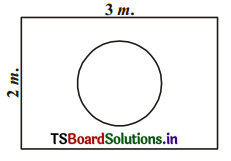
Solution:
Length of the rectangular region = 3 m
Breadth of the rectangular region = 2m
Area of the rectangular region =
Length × Breadth = 3 × 2 = 6m2
Diameter of the circle = 1 m
∴ Radius of the circle = \(\frac{1}{2}\) m
∴ Area of the circle = πr2
= \(\frac{22}{7}\) \(\frac{1}{2}\) \(\frac{1}{2}\) = \(\frac{11}{14}\) m2
∴ Probability that the dice will land inside the circle
= \(\frac{\frac{11}{14}}{6}\)
= \(\frac{11}{14}\) \(\frac{1}{6}\) = \(\frac{11}{84}\)
Question 12.
A lot consists of 144 ball pens of which 20 are defective and the others are good. The shopkeeper draws one pen at random and gives it to Sudha. What is the probability that
(i) She will buy it ?
(ii) She will not buy it ? (AS4)
Solution:
Total number of ball pens = 144
i) ∴ Number of all possible outcomes = 144
Number of defective ball pens = 20
∴ Number of good ball pens
= 144 – 20 = 124
∴ Probability that Sudha will buy it
= \(\frac{124}{144}\) = \(\frac{31}{36}\)
ii) Probability that Sudha will not buy it = 1 – (Probability that Sudha will buy it)
= 1 – \(\frac{31}{36}\) = \(\frac{5}{36}\)
![]()
Question 13.
Two dice are rolled simultaneously and counts are added (i) complete the table given below :
| Event: Sum on 2 dice’ | 2 | 3 | 4 | 5 | 6 | 7 | 8 | 9 | 10 | 11 | 12 |
| Probability | \(\frac{1}{36}\) | \(\frac{5}{36}\) | \(\frac{12}{36}\) |
i) A student argues that ‘there are 11 possible outcomes 2, 3, 4, 5, 6, 7, 8, 9, 10, 11 and 12. Therefore, each of
them has a probability \(\frac{1}{11}\). Do you agree with this argument ? Justify your answer. (AS3)
Solution:
When two dice are rolled simultaneously there are 36 possible out comes. So n(s) = 36.
i) Let E3 denotes that event that the sum on two dice is 3 the outcomes favourable to the event E3 = (1, 2), (2, 1)
No. of favourable out comes n(E3) = 2
Probability = \(\frac{\mathrm{n}\left(\mathrm{E}_3\right)}{\mathrm{n}(\mathrm{S})}=\frac{2}{36}=\frac{1}{18}\)
ii) Let E4 denotes the event that the sum on two dice is 4 the outcomes favourable to the event E4 = (1,3), (2, 2), (3, 1).
No. of favourable outcomes n(E4) = 3
probability = \(\frac{\mathrm{n}\left(\mathrm{E}_4\right)}{\mathrm{n}(\mathrm{S})}\) = \(\frac{3}{36}\) = \(\frac{1}{12}\)
iii) Let E5 denotes the event that the sum on two dice is 5 the outcomes favourable to the event E5 = (1, 4), (2, 3), (3, 2), (4, 1)
No. of favourable outcomes n(E5) = 4
Probability = \(\frac{\mathrm{n}\left(\mathrm{E}_5\right)}{\mathrm{n}(\mathrm{S})}\) = \(\frac{4}{36}\) = \(\frac{1}{9}\)
iv) Let E6 denotes the event that the sum on two dice is 6 the outcomes favourable to the event E6 = (1, 5), (2, 4), (3, 3), (4, 2), (5, 1)
No. of favourable outcomes n(E6) = 5
Probability = \(\frac{\mathrm{n}\left(\mathrm{E}_6\right)}{\mathrm{n}(\mathrm{S})}\) = \(\frac{5}{36}\)
v) Let E7 denotes the event that the sum on two dice is 7 the outcomes favourable to the event E7 = (1, 6), (2, 5), (3, 4), (4, 3), (5, 2), (6, 1)
No. of favourable outcomes n(E7) = 6
Probability = \(\frac{\mathrm{n}\left(\mathrm{E}_7\right)}{\mathrm{n}(\mathrm{S})}\) = \(\frac{6}{36}\) = \(\frac{1}{6}\)
![]()
vi) Let E8 denotes the event that the sum on two dice is 8
probability = \(\frac{\mathrm{n}\left(\mathrm{E}_8\right)}{\mathrm{n}(\mathrm{S})}\) = \(\frac{5}{36}\)
vii) Let E9 denotes the event that the sum on two dice is 9 the outcomes favourable to the event E9 = (3, 6), (4, 5), (5, 4), (6, 3), (7,2), (8,1)
No. of favourable outcomes n (E9) = 8
probability = \(\frac{\mathrm{n}\left(\mathrm{E}_9\right)}{\mathrm{n}(\mathrm{S})}\) = \(\frac{4}{36}\) = \(\frac{1}{9}\)
viii) Let E10 denotes the event that the sum on two dice is 10 the outcomes favourable to the event E10 = (1, 9), (2, 8), (3, 7), (4, 6), (5, 5), (6. 4), (7, 3), (8, 2), (9, 1).
No. of favourable outcomes n(E10) = 3
Probability = \(\frac{\mathrm{n}\left(\mathrm{E}_10\right)}{\mathrm{n}(\mathrm{S})}\) = \(\frac{3}{36}\) = \(\frac{1}{12}\)
ix) Let E11 denotes the event that the sum on two dice is 11 the outcomes favourable to the event E11 = (5, 6), (6, 5)
Question 14.
A game consists of tossing a one rupee coin 3 times and recording its outcome each time. Hanif wins if all the tosses give the same result i.e., three heads or three tails, and loses otherwise. Calculate the probability that Hanif will lose the game.
Solution:
Let H : Head, T : Tail
When we toss a one rupee coin 3 times,
S = {H, T} × (H, T} × {H, T} where ‘S’ denotes the cartesian product.
So, n(S) = 2 × 2 × 2 = 8
Let E be the event that Hanif will win the game
i.e., either three heads or three tails will come.
So, E = {(H, H, H), (T, T, T)}
n(E) = 2
So, probability that Hanif will win the game,
P(E) = \(\frac{\mathrm{n}(\mathrm{E})}{\mathrm{n}(\mathrm{S})}\) = \(\frac{2}{8}\) = \(\frac{1}{4}\)
So. probability that Hanif will lose the game,
P(\(\overline{\mathrm{E}}\)) = 1 – P(E) = 1 – \(\frac{1}{4}\) = \(\frac{3}{4}\).
![]()
Question 15.
A dice is thrown twice. What is the probability that (i) 5 will not come up either time ? (ii) 5 will come up at least once ? [Hint: Throwing a die twice and throwing two dice simultaneously are treated as the same experiment.]
Solution:
When a dice is thrown twice.
S = {1, 2, 3, 4, 5, 6} × (1, 2, 3, 4, 5, 6}
So, n (S) = 6 × 6 = 36
Let E denote the event that 5 will come up at least once.
Then, E = {(1, 5), (2, 5), (3, 5), (4, 5), (5, 1), (5, 2), (5, 3), (5, 4), (5, 5), (5, 6), (6, 5)}.
∴ n(E) = 11
i) Probability that 5 will not come up either time = P(\(\overline{\mathrm{E}}\)) = 1 – P(E)
= 1 – \(\frac{\mathrm{n}(\mathrm{E})}{\mathrm{n}(\mathrm{S})}\)
= 1 – \(\frac{11}{36}\)
= \(\frac{25}{36}\)
ii) Probability that 5 will come up at least once,
P(E) = \(\frac{\mathrm{n}(\mathrm{E})}{\mathrm{n}(\mathrm{S})}\) = \(\frac{11}{36}\)


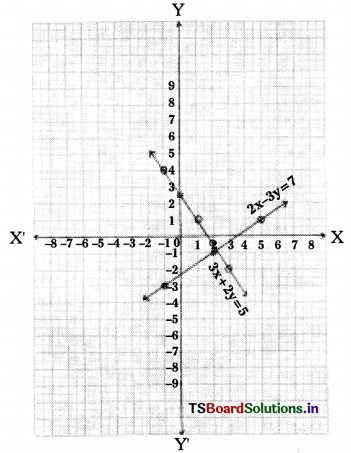


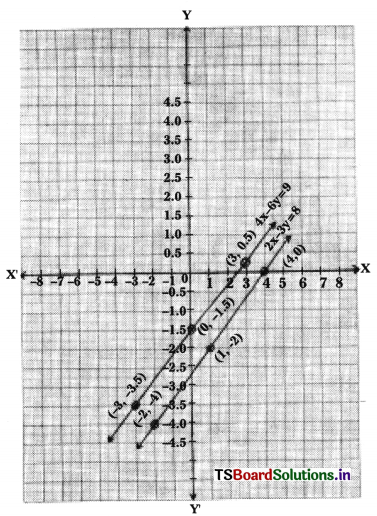
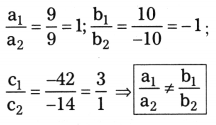


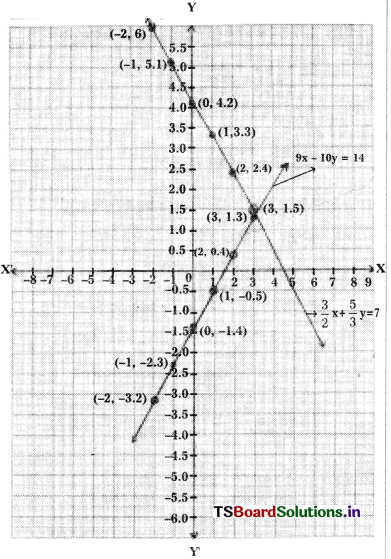


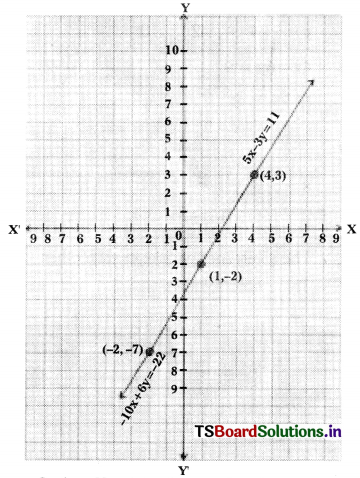


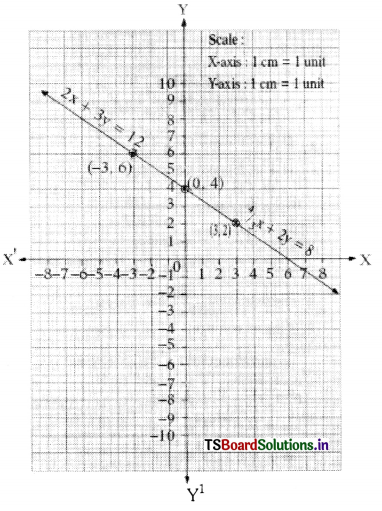


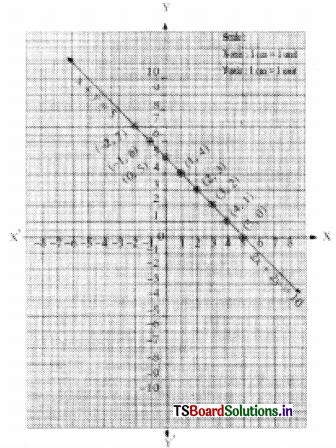


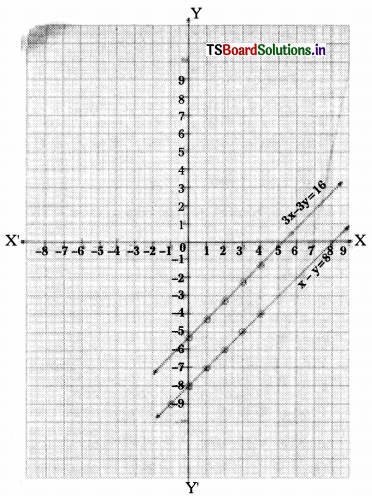


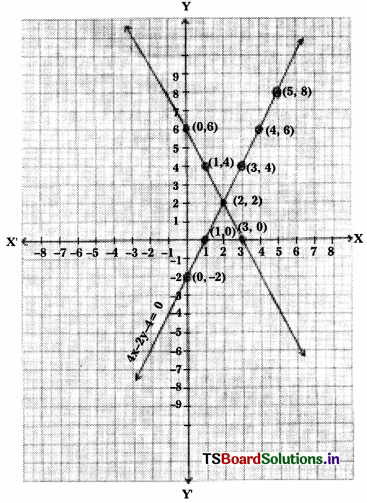


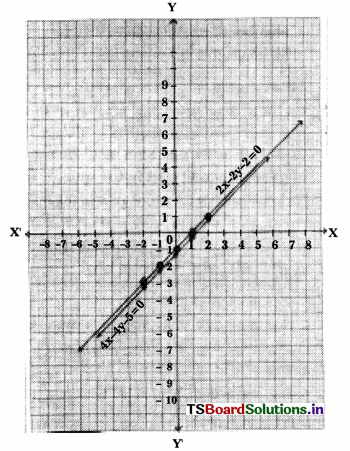

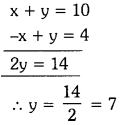
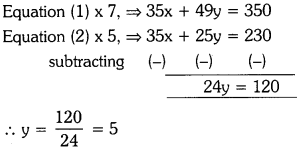
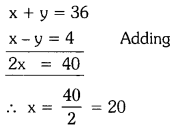
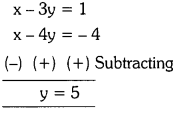
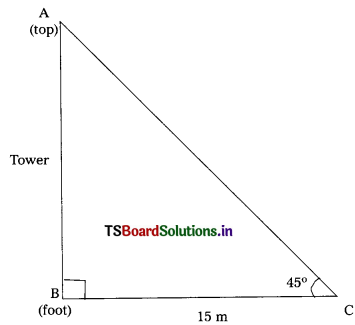
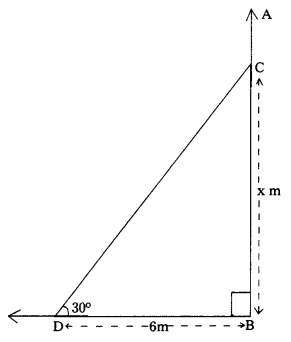
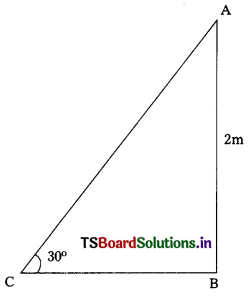
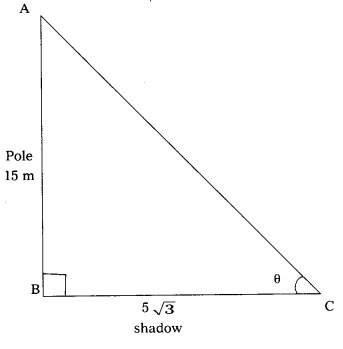
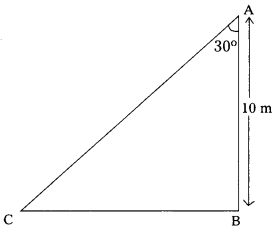
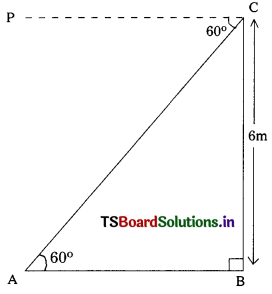
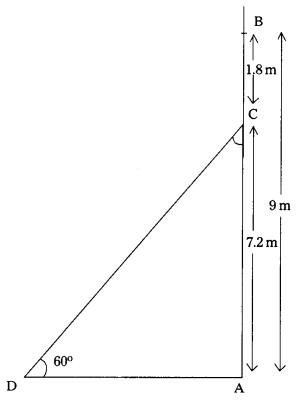
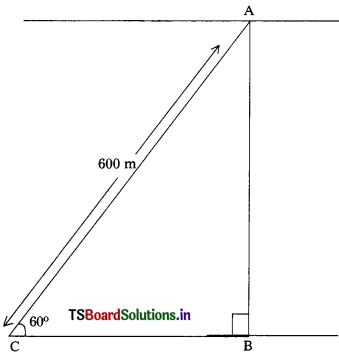
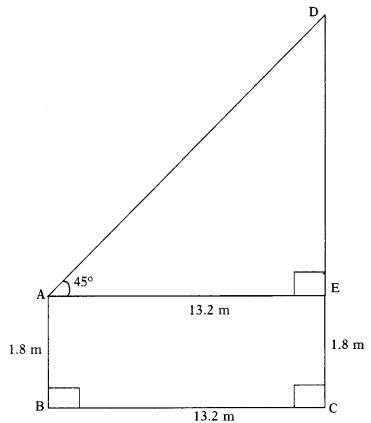
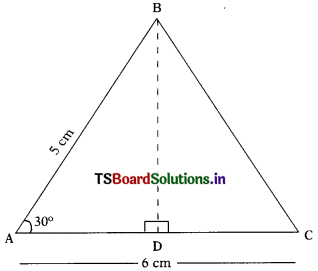
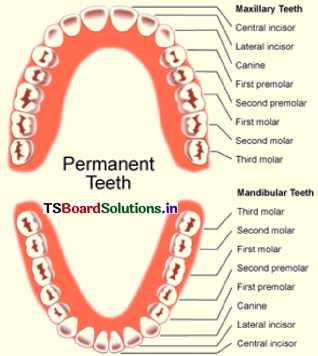

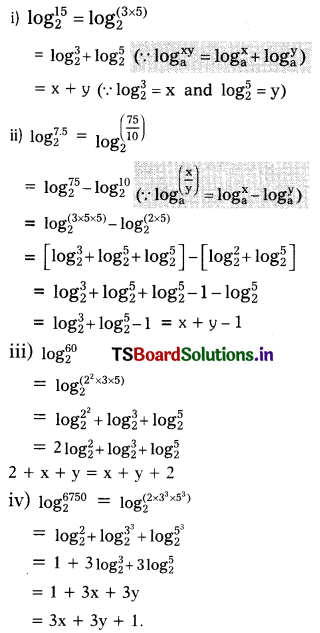
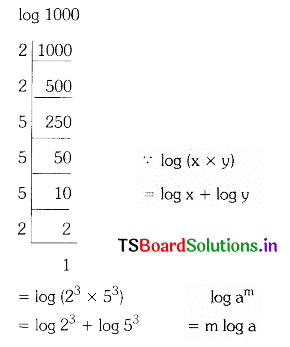

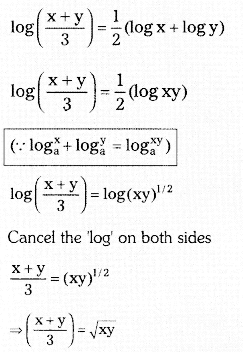
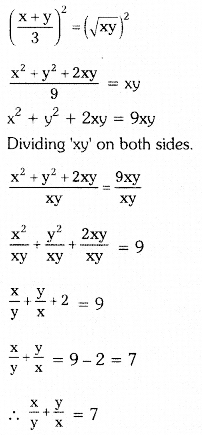
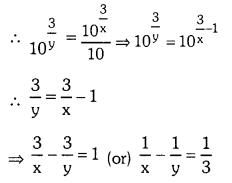
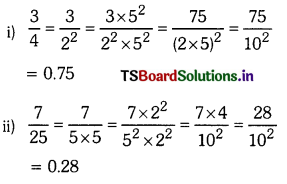
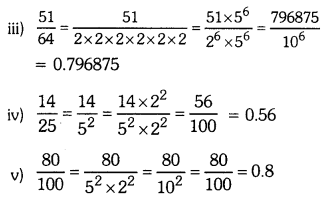
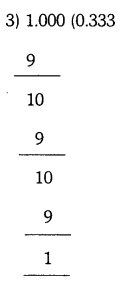
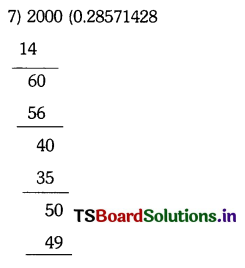

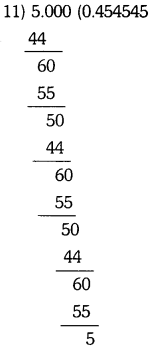
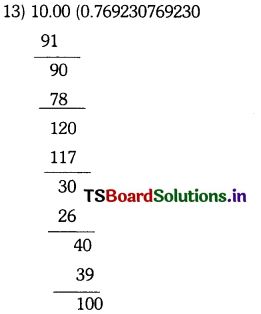

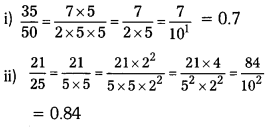
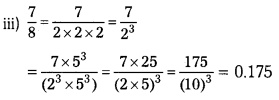
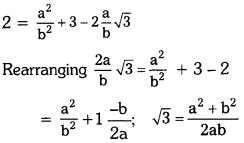
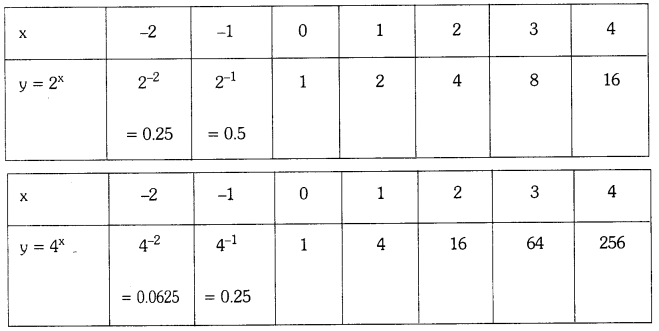
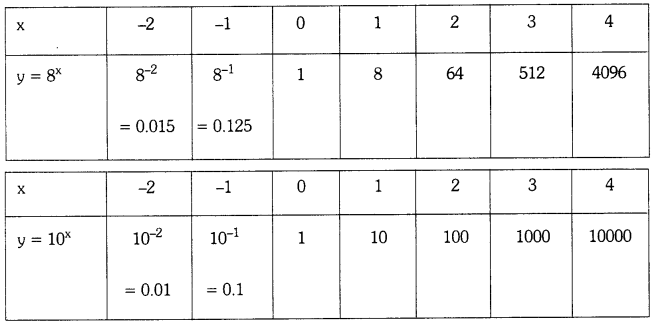
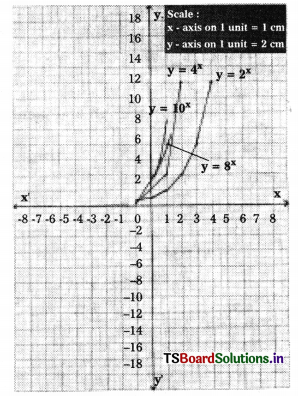
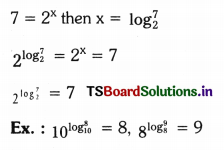
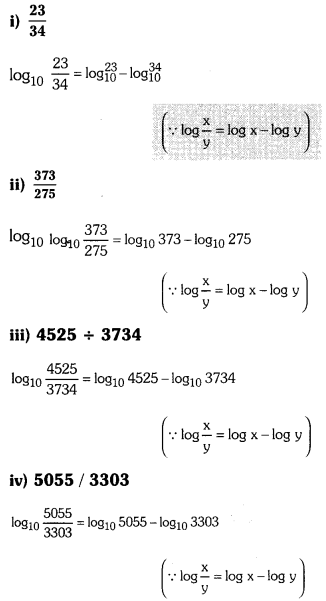
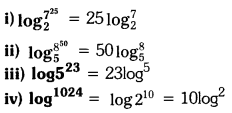
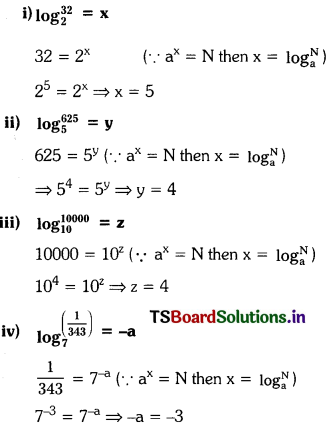

 (Page No. 21)
(Page No. 21)